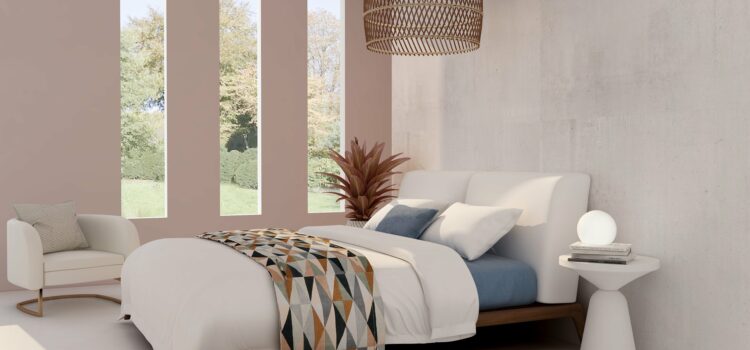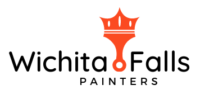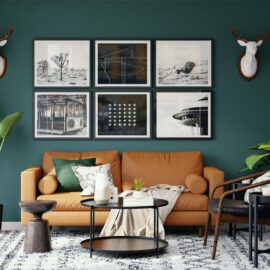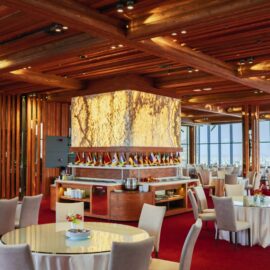
Ordinarily, we see structures painted in various tones and styles. There are three clear explanations behind applying paint to any design. First and foremost, it improves the presence of the structure. Furthermore, it shields them from the harmful impacts of water and sunlight, in this manner maintaining the lifespan and durability of the building. Thirdly, it will give a feeling of novelty, newness, and a feeling of completeness.
Painting your house interior and exterior requires good knowledge of the steps done while painting, what products do they use, and of which quality the products are available in the market. Don’t go before any paint marketing strategy products. Most paints are ordinarily fabricated and showcased by global organizations. These organizations abstain from utilizing specialized names while marking their paint items. Instead, they use brand names that draw in clients and promote the offer of their item effortlessly.
Because of the lack of knowledge, people start comparing Interior paints with exterior paints. Also, some do compare metal paints with wood paints. This absence of information and comprehension of the different kinds of house paint leads to poor decisions.
So, the following are the three special surfaces that are important to know while deciding to have interior Paintings.
1. Whitewash
Whitewashes and lime paints should be thin when applied. The truth is the best outcome will only be obtained if the application is entirely liquid thin. It must be thin to the point that the surface to which it is applied may effortlessly be seen through the film while it is wet. The coating will dry and become opaque. But two thin coats will give preferred outcomes over one thick coat.
A large whitewash brush is best for applying the wash. One should not try to brush out the coatings. Don’t apply oil paint. Basically, spread the whitewash on it as equally and rapidly as could be expected.
The important fixing in whitewash is lime paste. An acceptable paste can be made with hydrated lime. But better results are acquired by using quicklime paste that has been slaked with sufficient water to make it respectively solid. The lime glue should be kept in a loosely covered compartment for at least several days. Eight gallons of solid lime glue can be made by slaking 25 lbs. of quicklime in 10 gallons of water, or by drenching 50 lbs. of hydrated lime in 6 gallons of water. After soaking, the paste ought to be stressed through a fine screen to eliminate irregularities or unfamiliar matter.
Whitewash can be produced using different mixes of lime paste and different fixings. The accompanying two equations are good.
The casein, which fills in as the paste binder. It should be soaked in 2 gallons of boiling water until completely relaxed. Thus it gets softened roughly 2 hours later. After dissolving the trisodium phosphate in 1 gallon of water it ought to be added to the casein. Mix the blend until the casein breaks up. This solution should be blended in with the lime paste and 3 gallons of water.
The salt and alum ought to be dissolved in 4 gallons of high temp water. So after which the molasses might be added to the blend. The subsequent clear solution is then added to the lime paste. Which is blended energetically, and diminished with water to the ideal consistency. This whitewash has a yellow hint when previously applied. Yet the shading vanishes in a couple of days leaving a white film.
One more palatable whitewash can be made by weakening a substantial virus lime glue (around 33 lbs. of hydrated lime and 8 gallons of water) with 5 gallons of skim milk.
The region covered by a gallon of whitewash relies on the idea of the surface. Normally a gallon will cover around 225 sq. ft. on wood, around 180 sq. ft. on the block, and around 270 sq. ft. on mortar. The equations referenced will make from 10 to 14 gallons of whitewash. If a more modest amount is wanted, the measure of every fixing should be diminished proportionately.
2. Stippling
Regardless of whether you want the impact of stippling (minuscule paint spots) as a decorative impact. Also if you have a divider that has an uneven surface. Then you believe that you can conceal the imperfection by stippling it. Thus you might achieve this outcome easily.
For texturing you really need an exceptional brush; get one that is flat, and has short, good fibres.
The initial step is to coat the surface with a layer of paint, utilizing your standard paintbrush, spray, or roller. Then, at that point, while the surface is as yet wet, take the dry texture brush. And with short strokes drive the ends of the fibres into the wet paint. Be certain not to brush across. The outcome will be groups of tiny specks. At regular intervals wipe the brush with a cloth, to keep the bristle ends spotless and dry.
3. Stenciling
You might need design plans on the walls, or maybe even on floors and roofs, in a portion of the rooms or hallway. You might purchase or make your stencils. Which should be on weighty paper, stencil board, plastic, or metal. Stay away from stencils made of lightweight paper which will get soaked when touched by wet paint. Your paint seller will propose the best paint for you to use. As it will rely an extraordinary deal upon the surface over which you need to put the stencilled plans. Generally, weighty paint is utilized. For the goal that it won’t spread under the stencil while you are applying it.
The stencil should be held solidly against the surface with one hand. And the stencil brush should work over it rapidly with the other hand. Or, if you have an associate, it is best for one individual to keep the stencil consistent, while the other one does the painting. In eliminating the stencil, ensure you get it without smudging.



